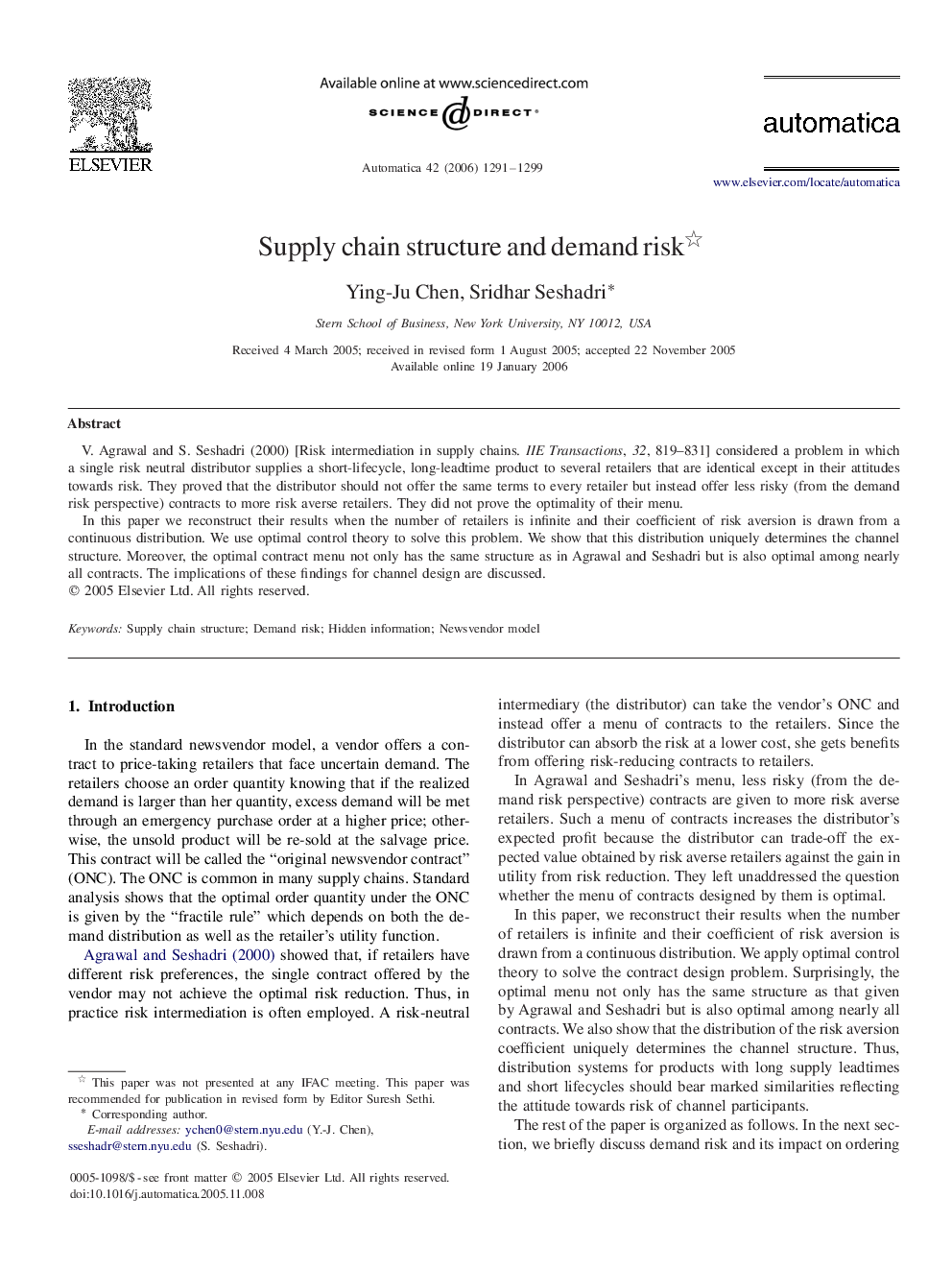| Article ID | Journal | Published Year | Pages | File Type |
|---|---|---|---|---|
| 698530 | Automatica | 2006 | 9 Pages |
V. Agrawal and S. Seshadri (2000) [Risk intermediation in supply chains. IIE Transactions, 32, 819–831] considered a problem in which a single risk neutral distributor supplies a short-lifecycle, long-leadtime product to several retailers that are identical except in their attitudes towards risk. They proved that the distributor should not offer the same terms to every retailer but instead offer less risky (from the demand risk perspective) contracts to more risk averse retailers. They did not prove the optimality of their menu.In this paper we reconstruct their results when the number of retailers is infinite and their coefficient of risk aversion is drawn from a continuous distribution. We use optimal control theory to solve this problem. We show that this distribution uniquely determines the channel structure. Moreover, the optimal contract menu not only has the same structure as in Agrawal and Seshadri but is also optimal among nearly all contracts. The implications of these findings for channel design are discussed.
